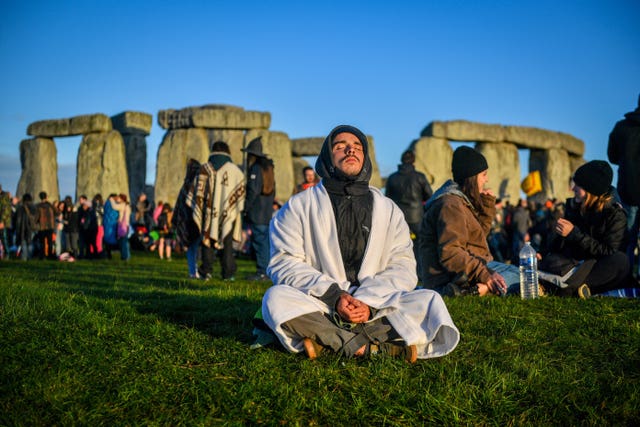
The summer solstice celebrations at Stonehenge have been cancelled because of the ban on mass gatherings to tackle Covid-19.
Thousands of people gather every midsummer to watch the sun rise at the neolithic Wiltshire monument on the longest day of the year.
But English Heritage – which has provided access to the event since 2000 – has cancelled celebrations due to restrictions on public gatherings, and will instead stream the solstice online.
The popular attraction has been closed since March 18 as the Government introduced measures to combat the coronavirus pandemic.
For everyone's safety and wellbeing, we've had to cancel this year's summer solstice celebrations at Stonehenge.
We know how special this occasion is to so many of you, and we'll be live streaming it for free online. pic.twitter.com/zMi0NzCmbO
— English Heritage (@EnglishHeritage) May 12, 2020
Stonehenge director Nichola Tasker said: “We are very sorry to be the bearers of this news today.
“Given the sheer number of major events worldwide which have already been cancelled across the summer, from Glastonbury to the Olympics to Oktoberfest, I doubt this will come as a huge surprise, but we know how much summer solstice at Stonehenge means to so many people.
“We have consulted widely on whether we could have proceeded safely and we would have dearly liked to host the event as per usual, but sadly in the end, we feel we have no choice but to cancel.
“We hope that our live stream offers an alternative opportunity for people near and far to connect with this spiritual place at such a special time of year and we look forward to welcoming everyone back next year.
“We know how strong the draw to come is for some people, but I would take this opportunity to say please do not travel to Stonehenge this summer solstice, but watch it online instead.”

English Heritage said the decision had been taken after consultation with the druid and pagan community, as well as police and emergency services.
Celebrations take place every year on or around June 21 at Stonehenge, a monument built on the alignment of the midsummer sunrise and the midwinter sunset.
On the summer solstice, the sun rises behind the Heel Stone, the ancient entrance to the Stone Circle, and rays of sunlight are channelled into the centre of the monument.
It is believed that solstices have been celebrated at Stonehenge for thousands of years.
Summer solstice takes place as one of the Earth’s poles has its maximum tilt toward the sun and the sun reaches its highest position in the sky, ensuring the longest period of daylight of the year.


Comments: Our rules
We want our comments to be a lively and valuable part of our community - a place where readers can debate and engage with the most important local issues. The ability to comment on our stories is a privilege, not a right, however, and that privilege may be withdrawn if it is abused or misused.
Please report any comments that break our rules.
Read the rules here